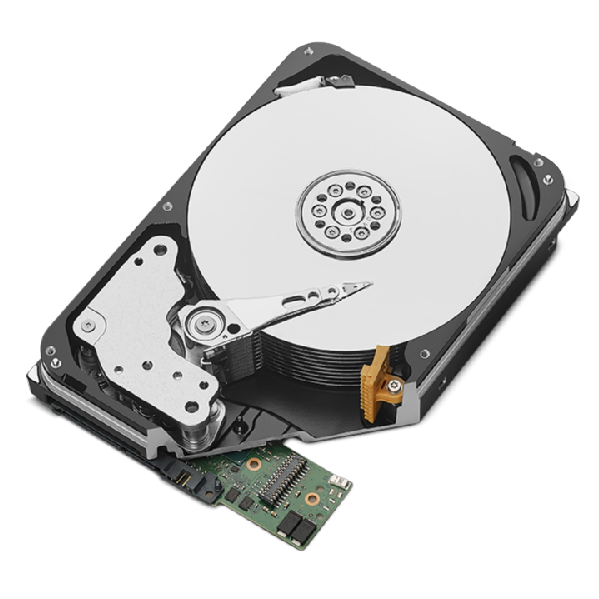Seagate IronWolf Pro 20TB 3.5″ HDD Review
Peter Donnell / 2 years ago
A Closer Look
There’s not really much to look at from the exterior of these drives, as you might expect really. The 3.5″ form factor has been a foundation of the PC market for decades, and of course, they’re making no changes to it to keep compatibility 100% with the millions of systems around the world. So really, from a distance, this looks just like any other 3.5″ HDD.

One thing that does feel different is the weight, there’s a lot going on here, and all that storage means more platters and you can feel it, this is a seriously heavy and robust feeling drive. It’s not just a case of it having more materials in it though. This is a NAS drive that’s meant to take sustained usage for years on end, so it just simply feels well-engineered to take that kind of punishment. I’mresspveily it has an operating temperature range of -40 to +70c. Also, you would think filling it with helium would make it lighter, but I’m afraid it doesn’t, but it does help it maintain its 7200 RPM speeds.

Seagate says the drive has a peak sustained transfer rate of 285 MB/s, a slight increase from the 260MB/s you get from their 18TB model. That doesn’t sound like much of an increase, but if you’re trying to fill 20TB, that speed boost is going to significantly increase the total transfer time. The 20TB drive comes with a huge 256MB Cache.

While I doubt your average NAS user is overly fussed with the efficiency, there have been some improvements. The drive now idles at 5.5W, which is slightly up from the 5.2W of the 18TB model. However, overall power usage is slightly down with just 7.7 Watts while active and 1 Watt in standby so it will put out less heat as a result. This isn’t going to be noticeable in a 4-bay NAS, but if you’re running a few hundred of these… well, that all adds up.

One interesting feature, not that you can see them, are the built‐in RV sensors. These are mounted on the interior of the drive to monitor things like acceleration and vibration and allow the drive to respond appropriately. This improves their overall stability and durability. When you’re running a huge NAS with dozens of drives, all those vibrations add up, so having a system that can monitor and adjust to them certainly makes sense.

Overall, the drive is incredibly advanced and a technical marvel. However, for folks like you and me, it’s really just a plug-and-play SATA 6 HDD. Just attach a SATA power cable, plug the cable into your motherboard or fit it into your NAS and you’re good to go.




















